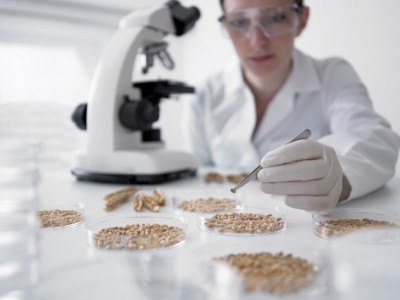New Cargill data shows the top three mycotoxins of concern globally

Ochratoxin (OTA) and T2 toxin (T2) show the lowest contamination rate, with less than 60% contamination occurrence.
FUM, DON and ZEN remain the top three mycotoxins of concern, above Cargill performance risk thresholds.
And, when evaluating mycotoxin load in terms of ingredients, the Cargill World Mycotoxin Report 2021 shows oilseeds had the lowest contamination concern.
The company’s mycotoxin contamination database is based on 300,000+ mycotoxin analyses captured annually across 150+ global feed plants, on-farm sampling, and storage locations.
Clement Soulet, additives category lead for Cargill’s animal nutrition business, weighed in on the findings for FeedNavigator:
“This year confirms a trend of increased prevalence with a need to focus on the top four mycotoxins occurring worldwide: Vomitoxin, Fumonisin, Zearalenone, and Aflatoxin.
“With 72% of all analyses testing positive for one or more mycotoxins, mycotoxin risk is real and must be carefully monitored.
“Thirty-five percent of all analyses were above the Cargill performance risk threshold, meaning that there was a reasonable chance animal performance would be affected. This means that 65% of all analyses posed little chance of impacting animal performance. Regular analysis of the raw materials used will help to mitigate the risk of mycotoxins while not overspending on a mitigation strategy.”
Performance thresholds are guides, and not an absolute assurance of safety, he said.
“Our thresholds give some leeway for interactions with other toxins and the presence of other stressors. In a low stress situation with only one toxin present, the impact on animal performance would likely not be significant. But in real world situations, with multiple stressors, co-contamination, and individual animal variability, the thresholds are a useful guide. They help us and our customers to identify where the probability of a negative impact on performance is low or high.”
Cargill is continuing to investigate the impact of co-contamination on animal performance to better quantify the impact multiple mycotoxins have on specific species, reported Soulet.
Masked and emerging compound risk
Asked whether the company looks to analyze contamination of feedstuffs by masked or emerging compounds, he said:
“There is still a lot to learn about masked and emerging compounds, and these are two areas of importance for Cargill in terms of our R&D. As we progress towards understanding the potential effects and frequency of occurrence of these compounds, we will develop actionable guidelines based on clinical observations, controlled studies, and in vitro analytics.
“At presence, our operational monitoring focuses primarily on the six major mycotoxins of known concern. Understanding the impact of any other toxins first is paramount to ensuring an operational control plan is both effective and economical.”
Regional trends
The report indicated that the Middle East & Africa (MEA) and Russia show lower mycotoxin prevalence and risk – the Cargill expert reported on the potential factors behind that trend:
“Climate can explain part of the difference. The average temperature in Moscow during the hottest month of the year is approximately 20⁰C, and it is over 30⁰C in Amman. While the temperature tends to be ‘perfect’ in other parts of the world for mycotoxin proliferation, it is bit too cold in Russia and too warm in MEA.
“However, another important point to consider is the frequency of analysis by toxin. In Europe, the US and China, all six mycotoxins are not analyzed equally. There is a greater focus on the ‘higher risk’ mycotoxins. In Russia and MEA, the six key mycotoxins are almost equally analyzed. When you focus more heavily on the mycotoxins with a higher prevalence rate in a region, you’ll find a higher contamination rate.”
He also gave us the likely reasons pockets of high FUM contamination were seen in the US Eastern corn belt in 2021:
“Traditionally, we see highest Fumonisin levels in the ‘mid-south’: Alabama, Arkansas, Louisiana, Texas, Oklahoma, and sometimes Kansas and Missouri. This year, the trend has moved east to the Carolinas, Tennessee, and Georgia. The weather patterns were a little different than recent years, including it being a little wetter in the mid-south, which is likely driving the shift.”
What about the presence of ZEN in grain by-products in that region?
“Occurrence of Zearalenone (ZEN) is less consistent than Deoxynivalenol (DON), but, in general, we find ZEN in the same regions as DON. DON has been a more consistent problem in grain by-products, but ZEN occurs in pockets. We observed high ZEN contamination in corn by-products such as DDGS.
“The wet weather and temperature variations we observed before the harvest in regions such as the Eastern corn belt of the US can play a role in the presence of ZEN, thereby contributing to increased prevalence.”
Impact on young animals, dairy cows
In relation to mitigating risk for farmed animals potentially exposed to mycotoxin contaminated feed raw materials, Soulet noted:
“Young animals and dairy cows are particularly vulnerable to mycotoxicosis. When formulating for these animals, greater attention should be paid to the potential negative effects of mycotoxins. One should be more vigilant and adapt their mitigation strategy accordingly.
“Mycotoxin contamination in the early life can have detrimental consequences for the remainder of the life of the animals. Raw materials intended for these young animals should be analyzed more frequently and the less contaminated raw materials should be selected.
“As for dairy cows, the production of higher milk volumes means more feed is needed, and therefore potentially more mycotoxins consumed. During times of high production, the rumen is less effective in detoxifying some of the mycotoxins ingested. Hence, dairy cows are, generally, much more sensitive to mycotoxins than one would be assumed. It is important to analyze the grains and forages fed to them to maximize their production.”











